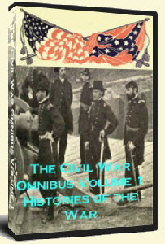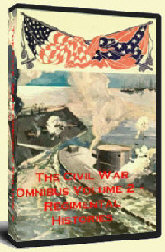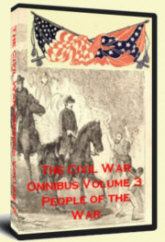Morgan’s Raid
The Confederacy was between a rock and a hard place in 1863. Lee was being thwarted in the East, while Vicksburg was besieged to the West. Perhaps a diversion was needed, something to create havoc on the border and in the North, and distract Federal troops. John Hunt Morgan had just the plan. The only problem was, he didn’t have the orders to carry it out.
John Hunt Morgan’s plan to divert attention from the eastern and western theatres of the war resulted in Morgan’s Raid, or the Great Raid of 1863, during which Morgan and a hand-picked cavalry stormed through his home state of Kentucky, then onto Indiana and Ohio, terrorizing soldiers and pro-Union civilians alike and creating a well-publicized trail of destruction in their wake. However, the raid, which was either a success or a momentary aggravation, depending on which side you were on, did little to advance either the Confederacy or John Hunt Morgan.
Confederate Brigadier General John Hunt Morgan left Sparta, Tennessee in June 1863 with a little over 2000 cavalry men and light artillery. Braxton Bragg’s Army of Tennessee had their hands full with the Federal Army of Ohio, and hoped that a raid through Tennessee and into Kentucky would divert the Army of Ohio and other Federal troops. Bragg gave Morgan one particular order – do not, under any circumstances, cross the Ohio River.
Morgan and his cavalry met a hero’s welcome in southwestern Kentucky. On July 4th, Morgan’s regiment met Federal troops at Tebb’s Ridge on the Green River, and emerged victorious. At Lebanon, Morgan and his men trapped 400 of the Federal 20th Kentucky regiment’s men at the town’s railroad depot; in the ensuing six-hour fight, Morgan’s younger brother, Thomas Morgan, was killed. Spurred on by grief, Morgan captured and paroled the Federal Kentucky regiment.
After Lebanon, it was on to Louisville, with several skirmishes in between. Morgan sent detachments north and east of Louisville, attempting to confound Federal forces as to his true destination. Morgan further confounded Federal intelligence by having his telegrapher, Lightning Ellsworth, send reports overstating the size of Morgan’s troops, while also sending messages that claimed to be from Union telegraphers. Ellsworth would keep up his work throughout the raid.
It was at Louisville that Morgan began to carry out his ultimate goal – to bring the war to the North by raiding Indiana and Ohio. First he would have to cross the Ohio River – which he’d been expressly forbidden to do. He began by sending a detachment across the Ohio River into Indiana ahead of his cavalry. The detachment was captured, reducing Morgan’s numbers by several hundred.
Undeterred, Morgan and his men commandeered two steamboats, and crossed into Indiana. The hostile Hoosiers attempted to fend off the raiders, who looted and terrorized throughout the southern tip of the state, destroying rail and telegraph lines and stealing from locals. A minor battle with Federal troops at Corydon only temporarily set Morgan and his raiders back; soon, they were on to Ohio.
The looting and destruction continued in Ohio, but not before Union General Ambrose Burnside took action. He trapped Morgan at the Battle of Bluffington Island, defeating the raiders and capturing 750 of Morgan’s dwindling forces. Surrounded in Ohio, Morgan and his men wandered about, with 300 of the raiders escaping into West Virginia.
Union forces finally caught up with Morgan and his men on July 26 at the Battle of Salineville. Morgan and his officers were captured, and hauled off to the Ohio Penitentiary.
Morgan didn’t stay penalized long; on November 27, he and six of his officers escaped, tunneling out of their cells and scaling the prison walls. All but two, who were recaptured, returned South.
While Morgan’s raid gained no ground for the South, it did create a significant disruption. Over 6,000 Union soldiers and militia were captured and paroled, 34 bridges were destroyed, railroads were disrupted in more than 60 locations, and thousands of dollars worth of supplies, food, and other items were seized from citizens and merchants.
Morgan himself had little impact after the raid. He never regained the trust of Bragg, whose orders he had defied, and not even a year after the raid, Morgan was killed while trying to escape Union forces.


